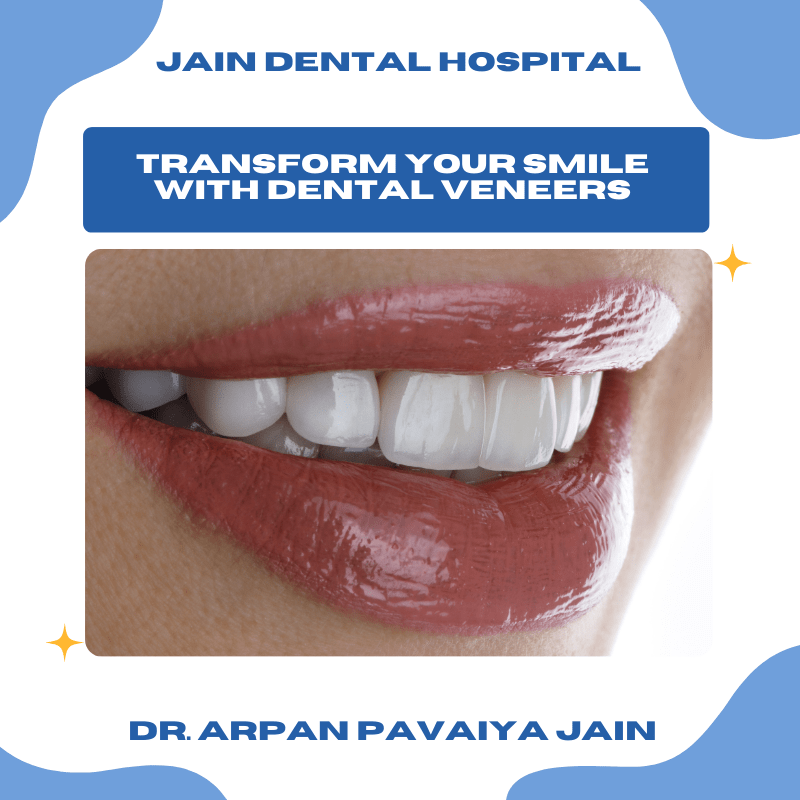Transform Your Smile with Dental Veneers: A Guide to Cosmetic Brilliance
A Beautiful Smile Awaits You
Have you ever caught a glimpse of yourself in the mirror and wished for that dazzling, perfect smile you always see on magazine covers and the red carpet? You’re not alone. A radiant smile is often associated with confidence and success, impacting personal interactions and self-esteem. Enter dental veneers—a remarkable tool in cosmetic dentistry that can transform your smile and boost your confidence.
In this guide, we’ll explore what dental veneers are, the types available, their benefits, and how they compare to other cosmetic dental options. Whether you’re dealing with discolored teeth, chips, gaps, or misalignment, dental veneers might just be the perfect solution for you.
What are Dental Veneers?
Dental veneers are thin, custom-made shells designed to cover the front surface of teeth to enhance their appearance. They are a popular choice in cosmetic dentistry for individuals looking to address various dental imperfections.
The primary purpose of veneers is to improve aesthetics by addressing issues like discolored teeth, chipped or broken teeth, gaps, and misaligned or irregularly shaped teeth. Veneers offer a versatile solution, capable of transforming a smile in ways that traditional whitening or braces cannot achieve.
There are different types of dental veneers, each catering to specific needs and preferences. From porcelain veneers to composite resin options, the choices are varied, allowing individuals to select what suits them best.
Porcelain Veneers
Porcelain veneers are among the most popular choices in cosmetic dentistry. These veneers are crafted from high-quality ceramic materials known for their durability and natural appearance. Porcelain veneers are highly resistant to staining and can mimic the light-reflecting properties of natural teeth.
One of the primary advantages of porcelain veneers is their longevity. With proper care, they can last anywhere from 10 to 15 years. However, they do require a more involved process, including tooth preparation and potential enamel removal. Despite these considerations, many find the results worth the investment.
Composite Resin Veneers
Composite resin veneers offer an alternative to porcelain, providing a more affordable option with quicker application. These veneers are made from a tooth-colored resin material, applied directly to the teeth in layers, and sculpted to the desired shape.
While composite veneers are less expensive, they typically have a shorter lifespan, lasting around 5 to 7 years. They are also more prone to staining and may require more frequent maintenance. However, the benefit of a quicker and reversible application makes them appealing to many.
Lumineers
Lumineers are a no-prep veneer option, meaning they require little to no reduction of the natural tooth. Made from ultra-thin porcelain, Lumineers are a great choice for those seeking a less invasive procedure.
Despite their ease of application, Lumineers may not be suitable for everyone. They can appear slightly bulkier compared to traditional veneers and may not provide the same level of durability. It’s essential to discuss with your dentist whether Lumineers are the right fit for your needs.
Ultrathin Veneers
Ultrathin veneers offer another alternative for those looking for minimal tooth preparation. These veneers are incredibly thin, allowing them to be applied with minimal alteration to the natural tooth structure.
The main advantage of ultrathin veneers is the preservation of natural teeth. However, like Lumineers, they might not provide the same durability as traditional porcelain veneers. It’s important to weigh the pros and cons before making a decision.
Aesthetic Differences Between Veneer Types
The initial appearance of veneers varies depending on the material used. Porcelain veneers often provide a more natural and translucent look, closely resembling real teeth. Composite veneers can also achieve excellent results but may not offer the same luster as porcelain.
Long-term aesthetic changes should also be considered. Porcelain veneers maintain their appearance longer due to their stain resistance. Composite veneers may require more frequent polishing and maintenance to keep them looking fresh.
The shine and lustre of your veneers contribute to the overall aesthetics. Porcelain veneers are known for their ability to mimic the natural sheen of teeth, enhancing the brilliance of your smile.
Benefits of Dental Veneers
Boost Your Confidence with Veneers
One of the primary benefits of dental veneers is their ability to significantly enhance the aesthetics of your smile. By effectively covering imperfections such as discoloration, gaps, and chips, veneers create a uniform and radiant appearance. This transformation can lead to greater confidence in social and professional settings, as individuals feel more comfortable showcasing their smiles. The result is not only a more attractive smile but also a notable boost in self-esteem, which can positively impact various aspects of personal and professional life.
Dental Veneers: A Durable Solution for a Perfect Smile
Another advantage of dental veneers is their durability. Porcelain veneers, in particular, are renowned for their strength and resistance to staining. With appropriate oral hygiene and regular dental check-ups, they can last over a decade. This longevity is a crucial factor for those seeking a long-term solution, as it reduces the need for frequent replacements or touch-ups, proving to be a worthwhile investment in maintaining a beautiful smile.
Dental Veneers: A Less Invasive Alternative to Crowns
Veneers are also less invasive compared to other cosmetic dental procedures. Unlike crowns, which often require significant alteration of the natural tooth, veneers typically necessitate minimal tooth preparation. This means that more of the healthy tooth structure is preserved, resulting in less discomfort during the procedure and a quicker recovery time. The no-prep options, such as Lumineers and ultrathin veneers, make this aesthetic enhancement even more accessible, providing patients with choices that fit their comfort levels.
Tailored Solutions for Every Smile
Moreover, dental veneers offer a degree of versatility that caters to a variety of dental imperfections. Whether addressing minor spacing between teeth or significant discoloration, veneers can be customized to suit individual needs. This adaptability makes them a popular choice among dental professionals, as they can create tailored solutions that align with each patient’s unique dental goals and concerns.
Low-Maintenance, High-Impact Smile
Finally, maintaining dental veneers may be less demanding than other cosmetic treatments. While regular maintenance is necessary, the care required is generally straightforward. Patients are encouraged to maintain good oral hygiene practices, including brushing and flossing regularly and avoiding overly abrasive toothpaste. This ease of upkeep allows individuals to enjoy the benefits of a stunning smile without the constant worry of how to maintain the enhancements.
Considerations for Dental Veneers
Before opting for dental veneers, it’s important to consider your eligibility. Not everyone is a candidate for veneers, and factors such as oral health, enamel thickness, and bite alignment play a role in determining suitability.
The cost of dental veneers varies depending on the type chosen and the number of teeth needing treatment. While porcelain veneers tend to be more expensive, they offer superior aesthetics and durability. Composite veneers are more budget-friendly but may require more frequent replacements.
Maintenance and care are crucial for preserving the appearance and lifespan of your veneers. Regular dental check-ups, proper oral hygiene, and avoiding habits like teeth grinding and biting hard objects are essential for longevity.
The Veneer Process
The process of getting dental veneers typically involves several stages, ensuring that each step contributes to a successful and aesthetically pleasing outcome. Here’s a comprehensive look at the various stages involved in the veneer application process:
Consultation and Planning
The first step in the veneer process is a thorough consultation with your dentist. During this appointment, you will discuss your desired outcomes, concerns, and the potential benefits of veneers. Your dentist will evaluate your oral health, examine your teeth, and may take X-rays or other diagnostic images to determine if you are a suitable candidate. This stage also involves discussing the various types of veneers available and selecting the most appropriate option based on your preferences regarding aesthetics, budget, and the invasiveness of the procedure.
Tooth Preparation
Once you and your dentist have agreed on the treatment plan, the next stage is tooth preparation. This involves trimming a small amount of enamel from the front surface of the teeth that will receive the veneers. The amount of enamel removed varies depending on the type of veneer chosen; traditional veneers require more significant alteration than no-prep options like Lumineers. This step is crucial as it creates space for the veneers to fit properly and provides a secure bond. After preparation, impressions of your teeth will be taken, which will serve as a mold for fabricating your custom veneers.
Temporary Veneers
In some cases, temporary veneers may be placed during the transition period between tooth preparation and the final placement of your permanent veneers. These temporaries act as a placeholder, protecting your prepared teeth and providing a preview of what your smile will look like. While wearing temporary veneers, it’s essential to maintain good oral hygiene and avoid sticky or hard foods that could damage them.
Fabrication of Veneers
The impressions taken during the tooth preparation stage are sent to a dental laboratory, where skilled technicians will create your custom veneers. The fabrication process can take a week or two, during which your dentist will ensure the veneers match your natural tooth colour and desired shape. This stage is critical, as the attention to detail in crafting the veneers significantly affects the final aesthetic outcome.
Final Placement
Once your permanent veneers are ready, you will return to the dental office for the final placement. Your dentist will first assess the fit and appearance of the veneers to ensure satisfaction. Next, the veneers will be bonded to your teeth using a special dental cement. The cement is applied to the back of the veneer, and the veneer is carefully positioned over the prepared tooth. A curing light may be used to harden the cement, ensuring a durable bond. After this, any excess cement will be removed, and the veneers will be polished to achieve a natural shine.
Follow-Up and Maintenance
Following the placement of your veneers, a follow-up appointment is often scheduled to ensure that the veneers are functioning correctly and that you are adapting to them well. Your dentist may provide specific care instructions to help maintain your veneers and protect your dental health. Ongoing maintenance is crucial; regular dental check-ups will allow your dentist to monitor your veneers and address any issues that may arise, ensuring the longevity of your smile enhancement.
By understanding each stage of the veneer process, patients can feel more informed and prepared as they embark on their journey toward a more confident smile.
Dental Veneers vs. Other Cosmetic Options
When considering cosmetic dental options, it’s essential to understand how veneers compare to alternatives like dental bonding and crowns. Veneers are ideal for those seeking a comprehensive smile makeover, addressing multiple issues with a single solution.
Dental bonding is a more conservative option, suitable for minor repairs and enhancements. Crowns, on the other hand, are more invasive and typically reserved for teeth with significant structural damage.
Choosing the right option depends on your specific needs and goals. Consulting with your dentist will help you determine if veneers are the best choice for achieving the perfect smile you desire.
Conclusion A New Smile Awaits
Dental veneers offer a powerful solution for those seeking a perfect smile. By addressing various dental imperfections, veneers can boost your confidence and transform your appearance.
From understanding the types of veneers to exploring the application process, this guide has provided valuable insights into the world of dental veneers. If you’re considering a smile makeover, consult with a qualified dentist to discuss your options and take the first step toward a brighter, more confident smile.
Remember, a perfect smile is within reach, and dental veneers can help you achieve it. Don’t hesitate to explore this cosmetic dental option and discover the beauty of a transformed smile.
Take the Next Step Towards Your Perfect Smile!
Are you ready to enhance your smile with dental veneers? Don’t delay your journey to a more confident you! Book an appointment today with our experienced team at Jain Dental Hospital. Visit our website at www.jaindentistdelhi.com or call us at +91-9582535204 to schedule your consultation. Let us help you achieve the smile of your dreams!

Dr. Arpan Pavaiya Jain, Director of Jain Dental Hospital, Indirapuram, Ghaziabad is a renowned Prosthodontist and Implantologist with over 20 years of expertise in advanced dentistry. A graduate of the prestigious King George’s Medical College Lucknow, he has performed more than 20,000 successful dental implant procedures. Dr. Jain leads a team of skilled professionals, offering state-of-the-art treatments in dental implants, clear aligners, cosmetic dentistry, orthodontics, and more. Known for his personalized care and commitment to excellence, he has earned a reputation as a trusted dental expert in Indirapuram, Ghaziabad.




